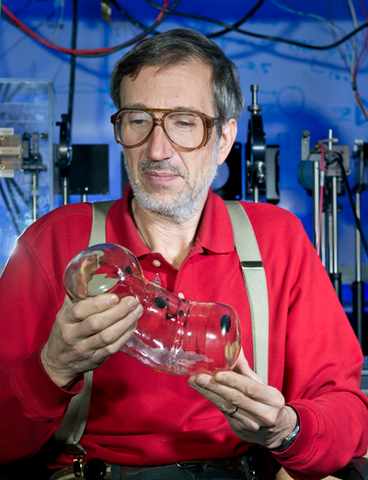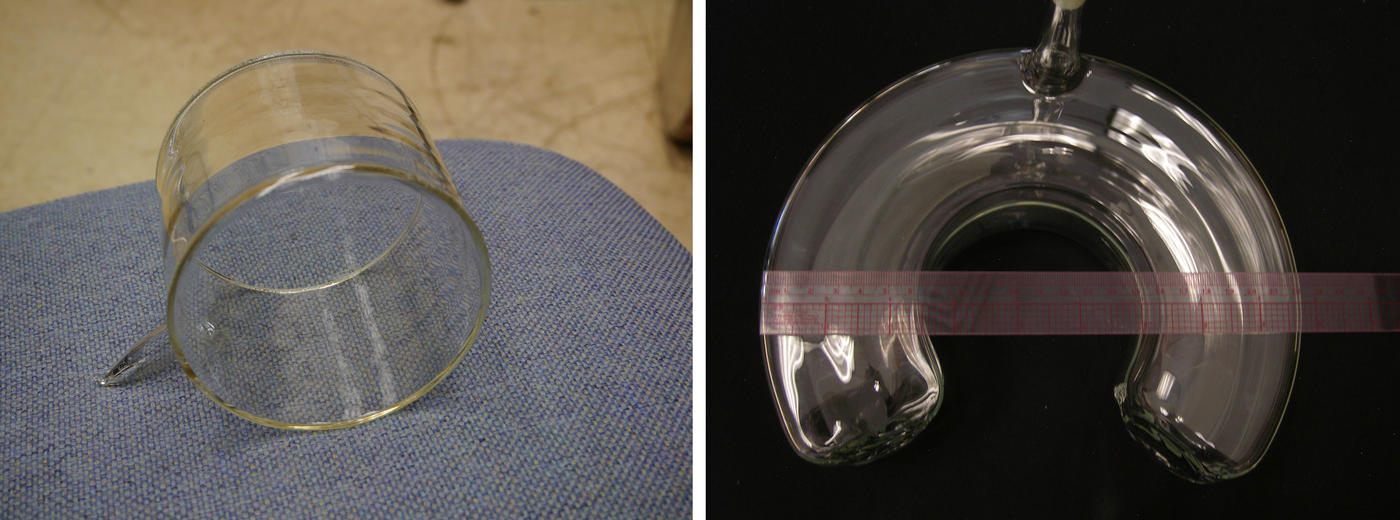Neutron Spin Filters

Thomas Gentile holds one of the new wide-angle neutron spin-filter cells. Each spans about 120 degrees of arc and has a volume of approximately 1 liter.
In the mid-2000s, NIST researchers constructed new facilities in the Radiation Physics Building to produce gas-filled cells known as neutron spin filters, which are used for research applications at the NIST Center for Neutron Research (NCNR). These special cells are essential to NCNR instruments that reveal the nature of certain kinds of magnetic materials that may play a major role in future technologies.
Neutrons possess a property known as “spin,” which is roughly analogous to the angular momentum produced by a spinning top. The neutron’s angular momentum produces a magnetic field that’s like a bar magnet with north and south poles. Like a bar magnet on a table, the spin of a neutron points in a particular direction. Usually, in a beam of neutrons, the spins are pointing in different directions. If neutrons are polarized, however, they are lined up with one another.
To produce a polarized beam of neutrons, researchers can filter neutrons so that only those with spins in a desired direction can pass through. Using a new approach that they developed, NIST researchers were able to markedly increase the polarization, resulting in a more intense, higher-quality polarized beam, which in turn could provide better data in experiments.
Moreover, the filters can polarize neutrons over a wider range of angles, which is advantageous for neutron scattering experiments. The ability to analyze the scattering of polarized neutrons over a wider arc offers a considerable improvement in measurement efficiency.
So the NIST team developed a large cell, covering an arc of about 120 degrees and about 1 liter in volume. The filters are used on multiple NCNR instruments. The researchers expect many important scientific results from the use of high-intensity polarized neutrons in the years ahead.

For more information on the filters, see a 2013 NIST news story and the NCNR site on neutron spin filters.

